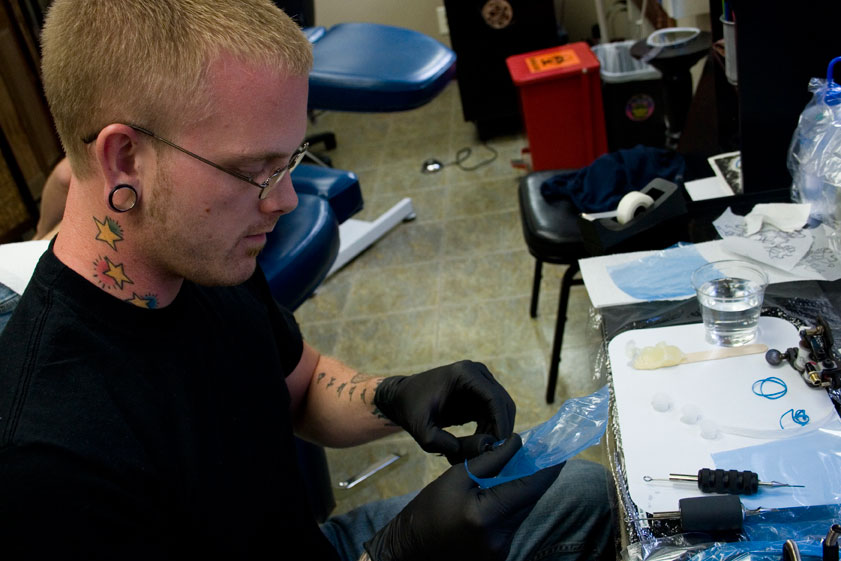 |
|

| Majestic Makeover |
| En Pointe |
| Menace to Masterpiece |
| A Way with Words |
| The Art of Giving |
| Making it Write |
| Tattoo Taboo? |
Tattoo Taboo? Redefining Body Art |
||||||
| Continued... | ||||||
Though each artist has his own tattoo niche and partiality for either color, black or gray, they could all agree that tattooing has become much more mainstream since they started. The practice, formerly representative of a rebellious counterculture, is now showing up as a high school graduation present or as the Sunday morning aftermath of a wild college weekend. Recently, shows like Miami Ink and LA Ink have familiarized the whole nation with the process of tattooing. Jaeger, who works at Black Dragon, said in the last few years he has noticed more 18 to 25-year-old customers come in. Unlike Blue Lotus, Black Dragon is not on a college campus and they had been used to seeing the more traditional “Harley guys” as customers. Kid, from Blue Lotus, has also noticed more people coming in since the creation of these shows. It may be that the popularization of tattooing through media and celebrities has reduced the amount of personal meaning tattoos can carry and has caused people question their artistic value. “It’s hard not to take it so personally that some people aren’t so into the art as I am,” Kid said. “It’s really a one-on-one situation where you’ll be talking to someone and they don’t understand the art behind it. But I don’t really expect people to and I think that’s one of the reasons I like it.” This popularization, and perhaps devaluation, of tattooing and “household” piercings—ears, nose, navel and eyebrow—has led some expressive souls to new forms of body art. Within the past two years, Blue Lotus introduced the practices of branding and scarification. Branding is burning a design into the skin so it will scar. Scarification is the process of cutting a design in the skin, which is then covered with Vaseline and Saran wrap so it can heal in a damp environment, resulting in a more dramatically raised scar. Branding and scarification are likely to be more painful and subjectively less visually appealing than other forms of body art, but Kid hopes these processes are the next step for people who think tattooing has become too mainstream.
“It definitely takes a certain kind of breed. It’s a more organic modification: your body grows into it. You’re not adding anything like pigment or metal, and some people like that.” Kid listed some other forms of body art on the rise: splitting tongues, implants (placing balls or rings beneath the skin), and even implants under the first layer of the eyeball. A lot of people might question when to draw the line between body art and voluntary mutilation. Some would even look at these practices and consider them fit for a circus sideshow. To others that’s just the momentary outlook, and in time these practices may well be adopted by the mainstream. “Everyone’s looking to take the next step and with advancements in technology they can,” Kid said. “Twenty years ago a septum piercing [the part of the nose between the nostrils] would be pretty much unheard of. Now you probably can’t walk down State Street without seeing one.” |
||||||
About Us | Contact Us | Business Partners | Archives | Sitemap
Copyright 2007 Curb Magazine
